According to modernist philosophy, cities are “human only” spaces built by and for the exclusive use of homo sapiens ― clean, sterile, artifacts of human imagination that symbolize humanity’s separation from nature. Aside from cultivated garden plants and a handful of companion or work animals whose presence is tolerated, non-human life in cities is regarded as matter out of place: inconvenient and unwanted at best and at worst, reviled and exterminated (Houston, 2018).
A new awareness is emerging, however, which problematizes the overly simplified nature/society dualism discourse. It brings to light the fact that cities have always been assemblages of multiple species, the product of numerous human and non-human co-evolutionary processes (Alberti, 2008). Critiques from disparate literatures, including zooarchaeology, animal studies, urban environmental history, multispecies ethnography, and the post-humanities have arisen to further unsettle the notion of urban human exceptionalism that has become ingrained in popular consciousness.
Running parallel with the multispecies analysis, the subject of urban biodiversity has matured greatly within a broader framework of the urban ecological sciences. It has grown from an “ecology in the city” paradigm study of “remnant populations” to a field that looks at the numerous ecosystem services provided by non-human life in the city, and how human/non-human co-habitation can be enhanced through appropriate design. There is an emerging understanding that cities may often support greater levels of biodiversity than surrounding areas (particularly industrial agricultural zones) and can function as refuges for certain threatened species (cite). As many of the world’s fastest growing cities are on the edges of some of the world’s biodiversity hotspots, research is being conducted on how urban development and biodiversity conservation can be co-managed, supported empirically by research fields such as “reconciliation ecology”. Urban biodiversity has now become an area of global urban policy, planning, and governance, documented in the extensive “Cities and Biodiversity Outlook” report drafted by the Convention on Biological Diversity (Elmqvist, 2013).
Mainstream studies on urban biodiversity, however, typically examine the issue through a highly reductionist lens: focusing on quantifiable data that can be extrapolated into generalizable best practices, applicable to planning and architectural strategies in any city in the world[i]. Seldom is attention paid to questions of politics and power as they apply to urban biodiversity. Which populations benefit from the ecosystem services provided by non-human life in cities, and are those populations represented in decision making processes related to biodiversity? How might certain people’s survival be closely linked with the well-being of urban non-humans? How can justice, equity and fairness for human urban residents can be furthered by forming mutually symbiotic inter-species partnerships. Going further, it can be asked whether non-humans have just as much of a “right to the city” as humans do ― are squirrels, birds, insects, amphibians, fish, fungi, weeds, and microbes as equally entitled to life and liberty in the urban ecosystem as humans?
Admittedly, answers to these questions are hard to come by on account of the paucity of research related to them. For a long time, concerns related to social justice and biodiversity conservation have been at odds with each other, with considerable tensions between communities advocating for either. There are many examples of conservationists, arising from “edenic” traditions and ideologies, seeking to create wilderness preservations that are off-limits to humans, indigenous or otherwise, even when humans may historically have played pivotal roles in the creation and functioning of those ecosystems (Heise, 2016). The separation between conservationists and social justice activists is further complicated by the fact that the divide often corresponds to race and class distinctions, with more typically white, Northern, and affluent conservationists accused by the later of caring more about animals/plants/ecosystems than they do about the suffering of members of their own species (the same critique has been similarly applied to advocates of urban greening vs environmental justice). Surely, in low-income urban communities it can be difficult to convince someone struggling to put food on their table that they should care about the well-being of the birds and the bees living around them. This alienation is compounded in cities by the so called “luxury effect”: a phenomenon where wealthier neighborhoods are observed to have higher rates of biodiversity than poorer ones (Leong, 2018).[ii]
What work has been done to try and bridge the divide between social justice and biodiversity conservation? Are there concepts that can be used to reconcile these seemingly disparate movements?
One potentially bridging framework is “biocultural diversity”. The United Nations Environment Programme coined the term ‘biocultural diversity’ in 1999 to describe the ‘inextricable link’ between the interrelated and co-evolved manifestations of biological, cultural, and linguistic diversity manifesting in complex socio-ecological systems (Buizer, 2016). Primarily focusing on indigenous and traditional peoples, the study of biocultural diversity contrasts the retention of biocultural knowledge among indigenous groups against its loss as a consequence of socioeconomic modernization. With a primary focus on rural communities, urban biocultural diversity studies have been few. A few recent publications, however, have started this conversation. Focusing on changing and evolving agrobiodiversity practices in peri-urban spaces, they have put forth the key concept of ‘biocultural creativity’, or the creation rather than the preservation of biocultural diversity (Buizer, 2016). This concept can be extremely useful for framing the rebuilding of symbiotic mutualisms between humans and the non-human life in novel urban ecosystems, and for making linkages between biodiversity and social justice. Another interesting boundary concept is “multispecies environmental justice” (Haraway, 2018), that asks what environmental justice looks like when extended beyond the human.
Discussing urban biocultural multispecies diversity-justice is a complex task ― there are many angles from which to explore the relationship between humans and non-humans in cities and how they relate to broader questions of equity, fairness, and justice. Rather than producing a generalizing “unifying theory” of urban biodiversity justice that strips away the important differences, nuances, and fractal micro-stories that exist in multiple locales, I’ll instead attempt to explore broad patterns of these relationships and speculate how they may later lead to the development of a more robust theory.
My primary focus on urban human/non-human relationships is within what I refer to as the “zone of reciprocity”. This refers to a space of human/non-human relationality located in between the highly domesticated (dogs, cats, other pets, farm animals, garden vegetables, etc.) and the non-domesticated urban “wild” (non-food producing trees, wild birds, most insects, urban deer, foxes, and coyotes, for example)[iii]. Somewhere in the middle of this messy continuum is the reciprocal zone: a collection of species across the taxonomic spectrum with whom we engage in mutualistic symbiosis with on a semi-controlled, semi-chaotic manner ― a give and take based on an ethos of respect and interdependency that is resistant to both domination and diffusion.
My hope is that by exploring and better understanding the zone of reciprocity, urban residents can learn to appreciate how their own health and well-being (as well as that of their families and communities) is closely linked with that of non-humans. The direct, tangible exchanges with these handful of reciprocal species makes it clear how benefits to humans and non-humans are shared. While the survival of humanity is of course entirely dependent upon the continued health of the global ecosphere, urban ecological alienation often causes people to be under-aware of this truth. Synanthropic relationships can provide a first step towards cultivating connection, empathy, and the awareness of reciprocity with species on the outside (wilder side) of the zone, ultimately leading to the cultivation of a broader biocultural justice and ecological literacy.
There are a number of species, that while indeed synathropic, I am not including in the zone of reciprocity. For a relationship to be considered reciprocal, both entities must benefit in some way from their exchanges. This excludes so-called “nuisance species”: mice, rats, rabbits, raccoons, squirrels, skunks, and opossums. Despite, or perhaps because of their success at co-habitation with humans, these animals are commonly maligned, reviled, and systematically relocated or exterminated. While I fully support changing our relationship with these species and learning ways to co-exist with them that do not involve mass killing, disturbance, or poisoning, I am currently not including them within the zone of reciprocity as, honestly, I am presently hard pressed to see how our relationships with them could become genuinely mutually beneficial, and not just less toxic. This is not to say it’s impossible, or that models do not already exist that I am unaware of. Crows and pigeons, two other common urban “nuisance” species, have been studied for their relatively unknown and overlooked symbiosis potential (Klein, 2007). It is my hope that these two examples could serve as inspiration for creating improved human/non-human relationships with other “nuisance” species.
I’m also leaving aquatic species out this discussion, focusing instead on terrestrial animals and plants. While it is completely conceivable possible to have reciprocal relationships with aquatic life (oysters and carp are good examples), I discuss this at length already in the water chapter, and for the sake of simplicity will exclude them here.
So, then what species are within the reciprocal zone? In addition to the aforementioned pigeons, I include silkworms (and mulberry trees), bees (both honey bees and “native” bees), black soldier flies, maple trees, wine cap mushrooms, … This is admittedly a very short and limited list. There are countless other species of semi-wild edible and medicinal plants growing in cities that people have reciprocal relationships with, selectively harvesting them for food and medicine while providing protection, pruning, care, fertilization in return. Numerous studies on urban foraging detail these relationships in depth ( (Poe, 2014) (Shackleton, 2017) (McLain, 2014)), I will not replicate them here. Instead, I will discuss this handful of species as they are the few that I have had direct firsthand experience with and believe to show promise to be further developed.
Pigeons
Humans and pigeons have a fascinating and highly complicated co-evolutionary relationship. They are one of the few species that on its own accord has chosen to live alongside us in the built environment, and in so much has arguably domesticated itself. Prized by people throughout history for meat, manure, and message carrying, these beautiful birds are now commonly maligned by many urbanites, unlovingly referred to as “rats with wings” and subject to massive and costly campaigns of exclusion and extermination. Despite their undeserved poor reputation, pigeons make a fascinating subject for studying human/non-human relationships in cities. Representing true “boundary objects” (Akkerman, 2011), pigeons straddle the edges of domestic and feral, resist attempts at control, and defy modernist mythologies of cities as “human only” places.
History
The pigeon or rock dove (Columba livia) is a bird that has lived in proximity to humans for millennia and is likely the first bird to be domesticated by humans. Native to the Middle East, parts of Europe, and east to India, the aptly named rock dove would build its nests in holes in rocky cliffs, flying short distances to find food to fulfill their diet of grains, berries, and seeds. In approximately 3000 BC, the first cities were built by people in the region. Towers made of mud, stone, and clay closely resembled the native cliff habitat of pigeons and were soon colonized by the birds. Feeding off our wastes and enjoying the reduced number of predators (raptors) found there, pigeons quickly adapted to urban living, prospering among us and often preferring the built environment to their own.
The human/pigeon mutualism further developed when people became aware of their value for both meat and manure. In order to enhance their habitat, niches were carved into towers (literal “pigeon holes”) and clay pots were hung. Both served as nesting spots for the birds, a very early form of reconciliation ecology that allowed urban pigeon populations to increase. The designed habitat made it easier to catch the birds (“squab”, the meat of a young pigeon, is considered a delicacy in many places to this day) and to collect their droppings in concentrated piles (“guano”, the manure of pigeons, is a potent nitrogen-rich agricultural fertilizer)[iv]. Shortly afterwards, “dovecotes” ― structures designed purely for the use of pigeons for roosting and breeding – were constructed. Dovecotes were built in a stunning variety of architectural forms, at times resembling beehives or miniature castles, that were common features not only in early cities but on European estates as well.
The ability to keep pigeons and maintain dovecotes has not always been equitably permitted. In 17th century France, only those in landowning professional classes could maintain dovecotes, and the number of pigeon nests within was determined by the size of their lands. The pigeons of the nobility were despised by local peasants as they fed on and caused significant damage to their crops. The unjust nature of pigeon keeping and the resentment it brewed are cited as contributing factors to the French Revolution, after which many dovecotes were destroyed (Cooke, 1920).
Pigeons have a highly developed homing instinct that allows them to navigate back to their home roosts, even after being transported away for many miles. The exact mechanism that they use to navigate is still not completely understood by scientists, but it’s believed to be a combination of magnetic sensors in their heads along with their use of visual clues. Pigeon’s homing abilities were recognized very early after their domestication and were utilized for sending messages at a speed much greater than over land travel. Early pigeon message delivery systems were created where written notes could be relayed by pigeons rapidly over great distances.
Fast forward to the present day, pigeon populations are enormous in most cities, with an estimated one to seven million birds or more living in New York City alone. The birds, largely brought over to North America by Europeans in the 1600s as a food source, have readily adapted to life in the modern metropolis (Nigro, 2012). Regarded with disgust by many, pigeons are often regarded as dirty, foul creatures that make messes and spread disease. Much money is spent trying to exterminate or control their populations, with nearly one billion dollars alone in the US each year. The bad reputation of pigeons is largely undeserved, however. While it’s true they may leave droppings, about twenty-five pounds per bird each year, (Mooallem, 2006) on buildings and statues causing some damage due to their acidity, people’s concerns regarding them are mostly cosmetic. Pigeons, like all animals, may carry certain human pathogens, however they rarely pose any significant risk to healthy individuals or to the public health at large despite sensationalistic reporting that has claimed the contrary (Haag-Wackernagel, 2004) (Jerolmack, 2008).
Today, pigeon raising is still common in cities, though not as prevalent as it once was. In many cities, pigeon coops on the roofs of row houses are a common sight. The pigeons kept in these coops are typically not the average feral pigeon but are fully domesticated breeds that have been raised specially for purposes ranging from racing to homing to pure fanciful showiness. Pigeon coops are mostly wooden structures with wire siding that protect the birds and create nesting spots for them. The owner will typically release the birds each morning, allowing them to fly about freely. Because pigeons have such a strong homing instinct, they will typically return to their coop each night, especially if nests are present and food is provided. Rooftop pigeon flying, a urban pastime that transcends racial and class boundaries, is increasingly threatened by the forces of gentrification which view it as being “messy” and unfavorable to upscale development (Berger, 2013).
Pigeons, chickens
Pigeons and chickens have been domesticated for longer than any other bird species. Pigeons, the first to be domesticated, outnumbered chickens for hundreds of years. Today, however, the inverse is true ― the number of domestic chickens has greatly exceeded that of pigeons. While there are currently an estimated 250 million pigeons on earth, chickens come it at a stunning 22.7 billion, most of which are bred in confined industrial farms for human consumption (Bennett, 2018). How can that shift, and discrepancy, be explained? Pigeons, simply stated, do not grow as big as chickens, and produce fewer eggs (a hen in her prime can lay one egg a day while a pigeon may lay one or two over several weeks). Also, because they’re not capable of sustained flight, chickens are easier to contain. Taken together, these factors have made chickens more amenable to concentrated, intensive farming practices, and has led to their subsequent human-assisted global population explosion.
In consideration of this, why would anyone choose to raise pigeons over chickens? If their desired goal is simply to produce food, it wouldn’t make much sense. Raising pigeons, however, provides benefits that make it a complimentary strategy to keeping pigeons.
Pigeons are unique among domestic animals in that they still can feed themselves through foraging, an ability that has otherwise been largely de-selected for in other domestic species. In a dovecote system, pigeons are provided shelter and nesting sites (and wintertime food) but are still allowed to fly freely in search of food, returning to the nest daily to deposit manure and rear their young. In urban applications then, when permitted to forage, pigeons could be thought of as “free-range” urban birds who uses the entire city as their “pasture”.
Chickens, by comparison, are far more dependent on having food provided to them by humans. In an urban area, there are few areas where it’s possible to raise free range chickens. Most chickens will need to be put in an enclosure, in order to protect them from predators and to keep them away from gardens, which they’ll destroy if allowed to have access to them. In an enclosed area, they will very quickly strip it of vegetation. Aside from the occasional bug that hops through, enclosed chickens will be entirely dependent on food being brought to them.
By raising chickens and pigeons together, it is possible to engage in both intensive (chicken) and extensive (pigeon) parallel and complimentary agricultural strategies. Pigeon and chickens can even share the same coop ― a secure structure that can protect them from nocturnal predators[v]. Pigeons will however need separate nesting boxes high up in the coop that chickens cannot access ― chickens would likely disturb a nesting pigeon and would probably eat their babies too!
A concern that immediately arises when discussing free range pigeons is whether they are accumulating toxins in their bodies by foraging in potentially contaminated areas. One study, examining the potential use of pigeons as bioindicators of lead toxicity, has documented how pigeon blood lead levels correlate with those of children in respective New York City neighborhoods (Cai, 2016). This would suggest that their may be some concern about eating free range urban pigeons ― blood lead levels are not necessarily indicative of levels in muscle tissue. As use of pigeon manure as a fertilizer is more common than eating pigeon flesh though, I have personally run an analysis of pigeon manure with an x-ray fluorescence machine and had detected negligible amounts in the sample (1.2 parts per million). More research in this area is warranted.
Pigeons at Radix
The Radix Center provides a home to a sizable flock of pigeons who share a coop shelter with our chickens. The pigeons use the same door entrance as the chickens, but have designated nesting boxes built at the top of the coop where they are protected from the chickens (adult pigeons and chickens get along just fine, however chickens will attempt to nest in pigeon boxes and will displace pigeons and eat their eggs in the process ― the pigeon boxes are placed at a height unreachable by flightless chickens and are additionally secured with entrance reducers that exclude chickens). Pigeons build their nests in these boxes, gluing sticks and twigs together with their own manure, where they raise their young.
Many people are surprised to learn that the pigeons were initially intentionally placed at Radix and are not just feral street pigeons that moved in on their own ― pigeons on purpose, as we say. Our pigeon colony began with a group of ten birds purchased from Broadway pigeon supply in Brooklyn at six dollars each. They were an odd mix of colors and breeds, some of them having “Jesus saves” printed on their plastic leg bands. They were kept inside the coop for two weeks before being allowed to fly free ― a process called “re-homing” through which they’ll accept the new coop as home base. Once adjusted, the birds were let out and were free to come and go as they choose. They’ll often spend the day outside, perched on the roofs of neighboring buildings and coming back to Radix to sleep and feed. I do not provide any special food for the pigeons ― they peck at the leftovers of whatever the chickens have been fed and drink from the same waterers. This food, and in addition to whatever they forage, is apparently enough for them to survive and breed ― at any given time there are likely babies being raised. Over the years, the population of pigeons has fluctuated considerably. Predator pressure has pushed it down at times, and at others there seem to be twenty or more birds living in the coop. I must admit that I do not keep track of individual birds, so I truly don’t know if any of the pigeons I have now are descended from the original group of pigeons I started with several years ago or if they have been entirely displaced and replaced by feral pigeons. While I have never eaten any of our pigeons, I do occasionally scrape out their manure and use it as a garden fertilizer.
While their manure is valuable, my main purpose for keeping pigeons is for their educational and symbolic value. On one level, they are one of the few agents at Radix who regularly leave the boundaries of the property, interact with, and mix with the outside community, and return on a regular basis (honeybees may be the only other example). This helps to break down (at least my own) perceived feelings about the “permeability” of the space ― energetic and material exchanges with the world outside Radix’s fence line promote mixing and make it feel like less of an “isolated” system. On an educational level, I routinely enjoy bringing a pigeon out for people to pet or hold. Despite regularly being around them, very few people have ever had any direct contact with a pigeon. By allowing people to interact with a one, they may question their own internalized attitudes about these “rats with wings” and hopefully better appreciate these beautiful and underappreciated birds. Pigeons also travel well. When visiting local elementary schools, I have brought pigeons with me as a way to teach about urban biodiversity. After giving students an opportunity to pet the bird, we then collectively release it and watch it fly (typically) back in the direction of Radix. When the same students later come to visit, they can once again see the same bird. In this way, the pigeon provides a way for children to think differently about the spatial relationship between Radix and their school.
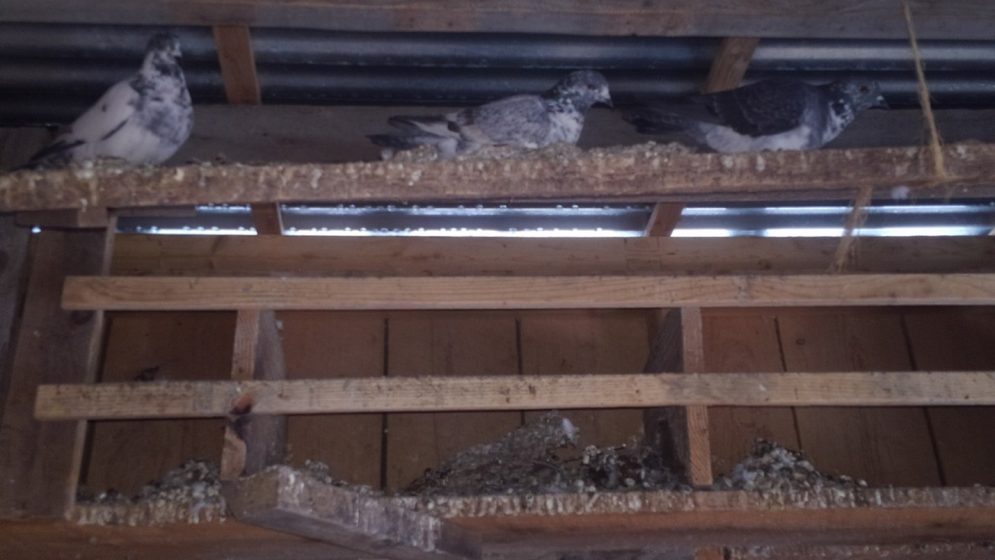
Silkworms/Mulberries
Silkworms (Bombyx mori) are an insect that has been raised for many centuries for their use in producing silk fibers. While more domestic than semi-wild (arguably silkworms and honeybees are the only two domesticated insect species ― a result of the extent of genetic alteration they have undergone through selective breeding), I include them within the zone of reciprocity because of the obligate symbiosis between silkworms and mulberry trees (genus morus), upon whose leaves they exclusively feed. While domestic silkworms are not naturally found anywhere in North America and depend completely on humans for their survival, mulberries are a common ruderal (disturbance tolerant) tree that grows and spreads prolifically in urban environments. The relationship between this domestic insect, wild tree, and humans makes an interesting subject for the exploration of reciprocal urban biocultural diversity.
“Sericulture”, or raising silkworms for silk production, is a practice originating in China that dates back thousands of years (Barber, 1991). In it, larval silkworms are raised in protected environments and fed the leaves of mulberry trees[vi]. As a larval caterpillar, the silkworm undergoes a rapid transformation from a tiny egg to a nearly three-inch caterpillar in a matter of weeks, gaining nearly 10,000 times its original weight. Once its growth is complete, the silkworm will spin a cocoon around itself and undergo metamorphoses into an adult silkmoth. In silk culture, this process is interrupted by placing the cocoons in an oven, or in boiling water. This kills the insect and allows people to begin unwinding the single silk thread that makes up the cocoon (about 1,000 yards in length). It is from these silk threads that silken fabrics are woven (unwinding the cocoons is a terribly labor-intensive process ― one of the reasons why commercial silk production was not widely practiced in North America[vii]). Were it allowed to complete its metamorphoses, an adult silkmoth would emerge from the cocoon as a flightless white moth that only lives for a short period, long enough only to mate and (for females) lay eggs. Because it can’t fly and contrasts so much against green leaves, it would have little chance of surviving predation in the wild and therefore poses no threat of being invasive.
While silkworms are not raised for their silk fibers at Radix, they are valued as a feedstock for animals. The mature silkworm caterpillars (or their pupae) make an excellent, high protein, fat, and calcium feed for chickens or fish (silkworm pupae are also commonly eaten by humans). By avoiding having to unwind silk cocoons, the labor costs of raising silkworms are hugely reduced. Furthermore, the droppings or “frass” produced by silkworms make a valuable fertilizer.
Apart from any utilitarian purpose, silkworms make a fantastic educational tool for children. For one, they are an extremely docile, slow-moving insect that will neither bite, sting, attempt to run away or escape confinement. Their skin is soft and fleshy and can easily be held in a child’s hand. These factors alone are great for helping children to extend empathy to insects, a group of animals that have a high “yuck factor” ― connection with them reduces disgust sensitivity and fosters compassion towards non-humans. Beyond this, their rapid growth rate and ease of care make them an effective learning tool for children with limited attention spans.
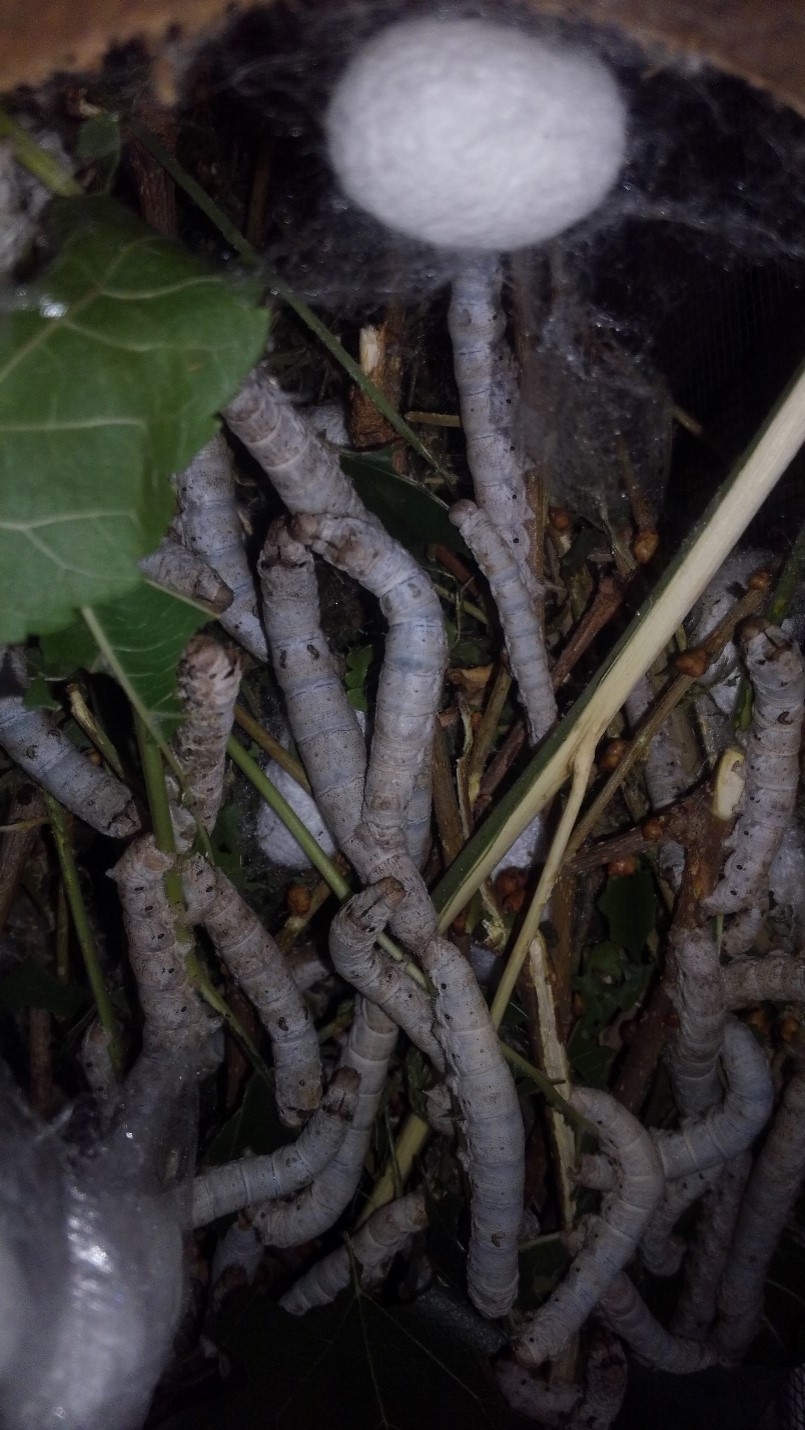
Mulberry Symbioses
Mulberries are a type of tree in the genus Morus consisting of several species found throughout the world. Morus rubra, or the red mulberry, is native to the Eastern United States and is often hybridized with the non-native white mulberry. Along with the black mulberry, these three species are commonly found in disturbed locations throughout urban environments. Producing delicious berries, mulberry fruits are enjoyed by humans and birds alike and are widespread on account of the latter’s dispersion of seeds. Some cities are home to large concentrations of mulberries (or “moriculture” farms) that are the surviving legacy of bygone attempts at establishing an American silk industry[viii].
I have found mulberries to be numerous enough in Albany that it is possible to collect enough leaves on my way to the Radix Center to sufficiently feed a colony of one-hundred plus silkworms without having any noticeable impact on the tree’s density of foliage. Regardless, I have planted them in numbers at the Radix Center for their multiple other uses. Extremely fast growing, I have placed mulberries around the periphery of the chicken run to provide shade and food for the chickens (by shaking the branches, I can cause multiple berries to drop inside the chicken’s fence, which they quickly devour). Berries not eaten by chickens become food for humans (great for jams) or for wild birds (who are far better at accessing berries in the tall, thin branches). Furthermore, the proximity of the mulberry leaves makes feeding silkworms a more convenient task.
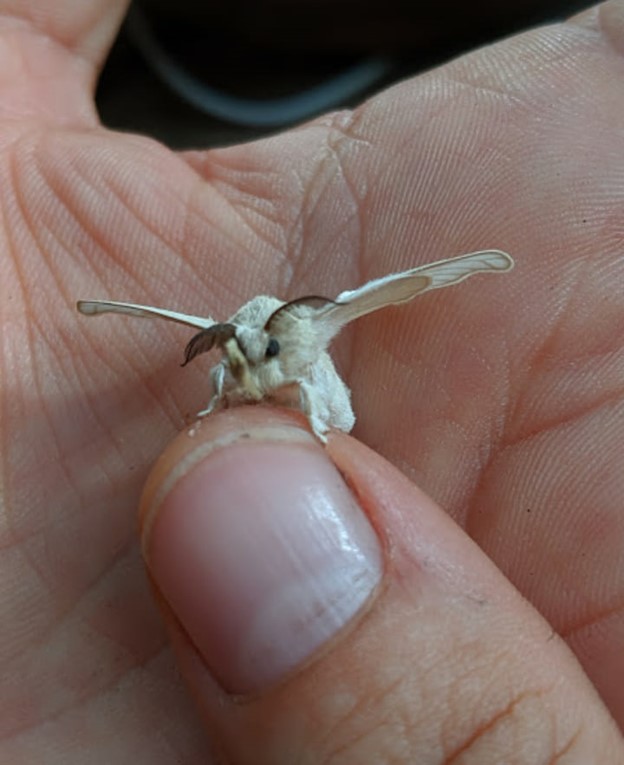
Maple Trees
In the late winter, when daytime temperatures push above freezing ― yet still fall below the freeze point in the night – and the number of daylight hours start to increase, the sap of maple trees (genus Acer) starts to flow from its roots to its buds as it prepares for the coming spring. The environmental triggers of temperature and light entice the tree to convert starches (stored throughout the winter in its roots) into sugars, which are carried in liquid sap upwards through the trees’ vascular system. By creating small holes in the trees’ bark, the sugary sap (a two-percent sugar content) can be collected and boiled down into maple syrup, a deliciously sweet product that is now known and sold worldwide. When employing best practices, maple trees can be sustainably tapped year after year without negatively impacting the health of trees (Berg, 2012). In this sense, maple tapping is regarded as a sustainable non-timber use of tree products, and has parallels with similar practices throughout the world including rubber tapping, pulque, and palm wine production (Osa, 2013). The flow of sap is one the first signs of spring in the region ― connection with it gives a feeling of movement, life, and animacy during a time of year that may otherwise feel endlessly bleak. While traditionally associated closely with rural life and spaces, maple tapping can be carried out in urban environments as well with little modification. A fun and multi-sensory activity, tapping urban maple trees is an excellent way to foster a sense of reciprocity, biocultural diversity and urban forest justice (Poe, Urban forest justice and the rights to wild foods, medicines, and materials in the city, 2013) among participating youth.
Maple tapping is a technology originally developed by indigenous peoples of eastern North America for whom it had great nutritional and cultural significance (Kimmerer, 2013), and is still practiced by their descendants today (Murphy, 2009). The practice was thereafter adopted by European settlers in the northeastern US and Canada (for a time maple sugar was regarded by Northern abolitionists as a morally-preferable, locally made alternative to cane sugar produced through slave labor (Sturges, 2018)). While traditionally carried out by hanging hand-collected buckets from taps or “spiles” in the sides of trees and boiling off water with locally harvested firewood, maple extraction in the later 20th century has expanded into a large-scale industry that produces millions of gallons annually. Employing yield-increasing technologies such as reverse osmosis and vacuum pumps, industrialized sugarbushes consist of miles of tubing crisscrossing the forest that deliver sap to fossil fuel powered evaporators. More recently, a high-yield method has been developed that involves cutting the tops off sapling maples that, when coupled with sophisticated technology, effectively transforms maple tapping from a perennial semi-wild practice into a highly controlled annual monoculture (Brown, 2013). The high capital costs of these innovations have made it extremely difficult for small-scale maple producers to remain competitive (Gorelick, 2016). The focus of this section will be upon more traditional technologies and practices requiring reduced capital and energetic expenses.
Within their North American range (primarily the northern and eastern half of the country, extending into southern Canada), maple trees form dense stands and are often the dominant tree species in particular ecosystems (Duchesne, 2005). The trees are abundant inside of cities within this extent as well, with maples consisting of eighty percent of all street trees in Worcester, Mass. (the trees were planted extensively in the 1950s on account of their availability and shading however they are now threatened by the Asian long-horned beetle) (Green, 2008). While the sugar maple (Acer saccharum) is regarded as producing the best quantity and quality of syrup, it is possible to produce fine syrup from any tree in the acer genus including red maples, silver maples, box elders, and the Norway maple (other tree species, such as sycamores, birches, and walnuts are also tap-able but will result in low yields) (Farrell, 2013).
At the Radix Center, maple syrup production is an integral component of our urban ecosystem justice curriculum. Each year we are granted a permit from the City of Albany to tap the stands of maple trees in neighboring Lincoln Park, as well as a number of trees on public school campuses. Youth are engaged in every aspect of the process including selecting trees to be tapped, drilling and tapping, regular sap collection, and sap boiling/syrup finishing. The finished maple syrup (which does not legally need to be produced in a commercial kitchen ― unlike jams, jellies, and other added value products) can then be sold by the youth throughout the year[ix].
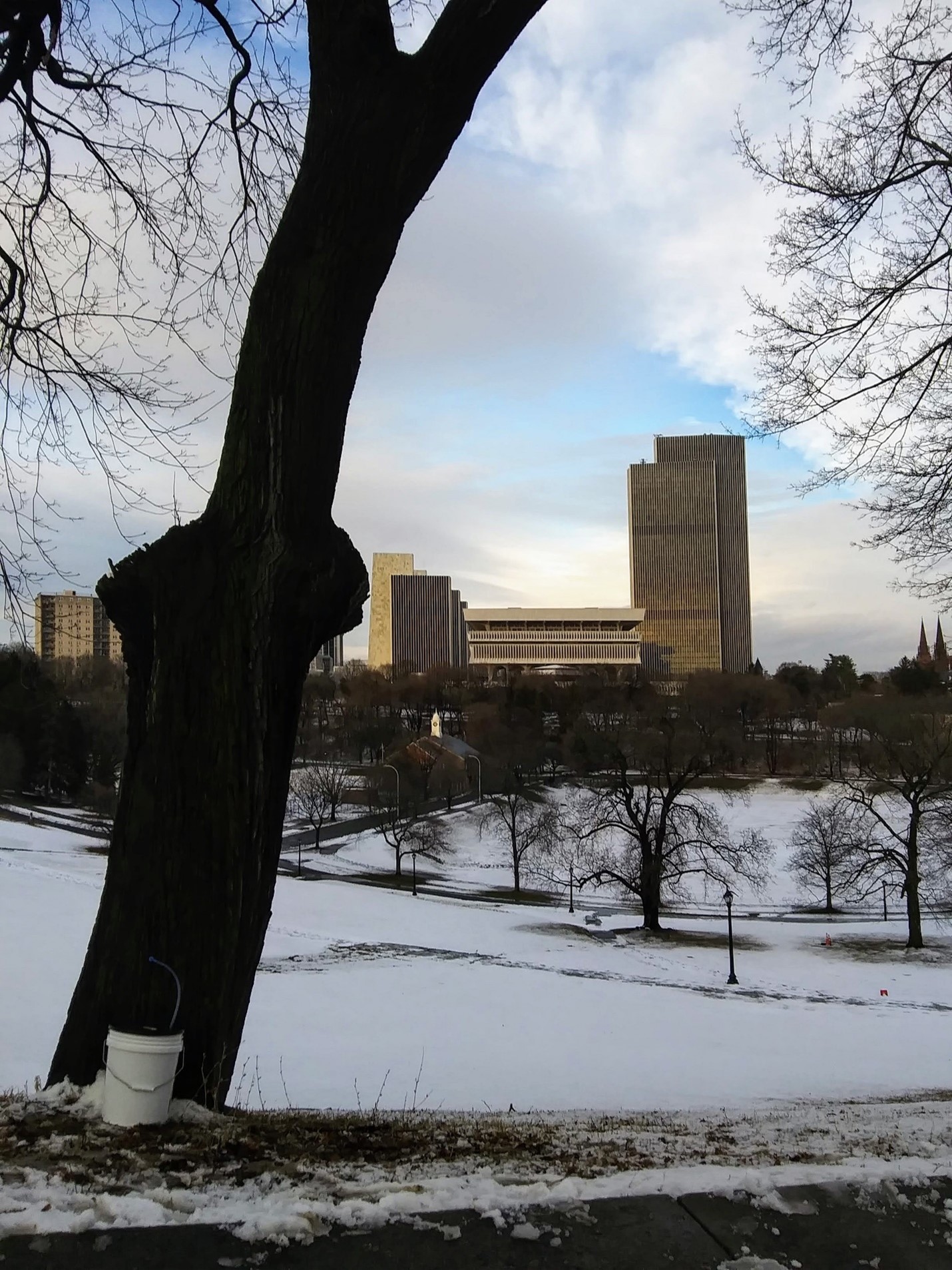
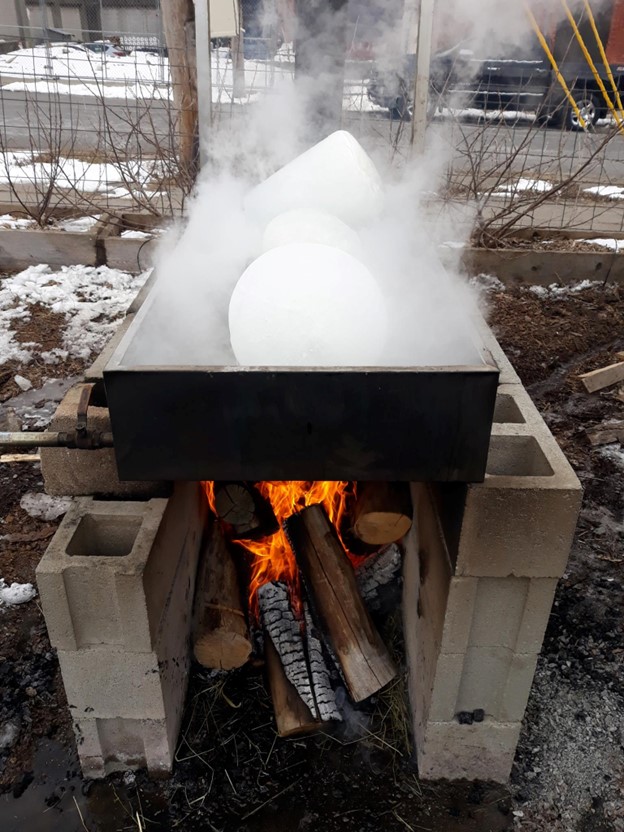
Scaling up
Once you have mastered small scale syrup making, you could consider scaling up your production. At Radix, we put out approximately (50) five-gallon buckets and taps to collect sap. Large buckets are too heavy to be hung from spiles when full, so they are placed on the ground and a length of sap tubing is run from the spile through a tight-fitting hole in the lid of the bucket (buckets must be kept sealed in order to keep out rain). Sap is collected on a regular basis and transferred to a large storage barrel/pot that is kept cool by being packed in snow (it is important to keep sap cool ― if it gets too warm it becomes vulnerable to bacterial contamination/fermentation).
Black Soldier Flies
Another insect within the “zone of reciprocity” that can be partnered with for purposes of both protein production and waste management is the black soldier fly. Black soldier flies (Hermetia illucens), or BSF, are a species of fly in the family Stratiomyidae that superficially resemble a wasp more than a fly. They have beautifully iridescent wings, stubby antennae, and streamlined bodies. Slow flyers incapable of biting or stinging, they can be picked up and handled without difficulty, often landing on humans while resting. As adults, they do not eat – all their feeding is done while in their larval states. Since adults have no interest in food, they do not buzz around picnic tables or come into kitchens and spread disease in the way that common house flies do (BSF larvae actively compete with house fly maggots, further reducing their pestilence). Upon metamorphosizing into an adult, BSF only live for a few days ― long enough to reproduce, lay eggs, then die shortly afterwards. A short, elegant cycle of living and dying.
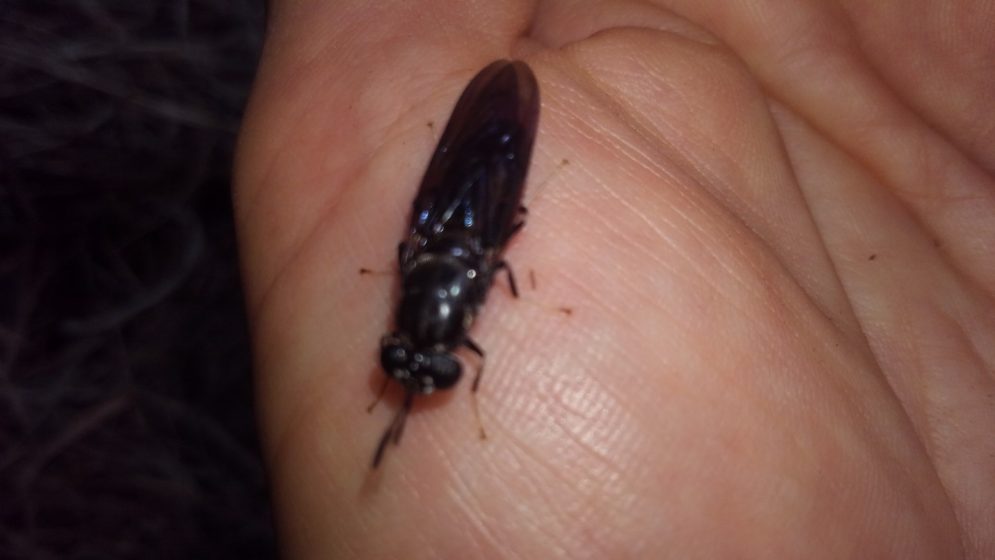
While in their larval phase, BSF are voracious consumers of organic wastes, particularly “putrescent” wastes including meat, dairy, manures, carcasses, and cheese ― high nutrient materials prone to putrefaction, decay, and odors that are otherwise difficult to compost with conventional methods. Despite being historically regarded as a pest (Tomberlin, 2020), the ability of black soldier flies to rapidly consume putrescent wastes has now been widely recognized and studied and has been put into use throughout the world (Nguyen, 2015)[x]. BSF composting can be carried out on scales ranging from the mega-industrial to the micro-sized DIY and can be either rigorously controlled or minimally managed (Nana, 2018). This scalability and accessibility makes BSF composting a promising tool of both urban and rural communities for ecological regeneration, particularly for upcycling putrescent wastes into fertilizer and feedstock.
In addition to their waste reduction capabilities, BSF have also been heavily studied for their use as a livestock feed. Rich in both fat and protein, BSF larvae will be gleefully eaten by chickens, reptiles, and notably, fish ― therein potentially helping to reduce the aquaculture industry’s use of bycatch-based feeds (a significant cause of oceanic depletion and obstacle to the development of sustainable fish farming) (Swinscoe, 2019). While significant legal and cultural boundaries remain, there is also considerable interest in growing BSF as a protein source for humans (Wang, 2017). Not without precedent, BSF entomophagy remains a practice of some traditional societies (Chung, 2010)[xi]. Topping off their list of benefits are the facts that BSF wastes, a dark-crumbly compost, are themselves excellent gardens fertilizers (Sarpong, 2019) and that the fatty oils in BSF may be extruded and used as a fuel for bio-powered maggot-mobiles (Li, 2011). By upcycling waste products into a edible protein, BSF have promising potential to create more cyclical urban metabolisms in regards to both waste and food.
BSF are native to the Americas, although they can now be found throughout many tropical and temperate regions of the world, having been either intentionally or accidentally introduced[xii]. As adults are most active when temperatures are above 80F, low temperatures have limited their northward migration (Spranghers, 2017)[xiii]. Due to climate change, however, the range of the BSF will surely increase, along with that of many other insect species (Bradshaw, 2016). Without any solid data to support it, I have personally observed BSF in northern locales with greater frequency over the past decade. I suspect that their larvae are surviving winters inside of outdoor compost piles, which provide both heat a food source. It is possible that BSF occurrence in cities is greater than surrounding rural areas, with the urban heat island and abundance of organic waste giving them an edge on survival as it does similarly for other insects (Frank, 2020).
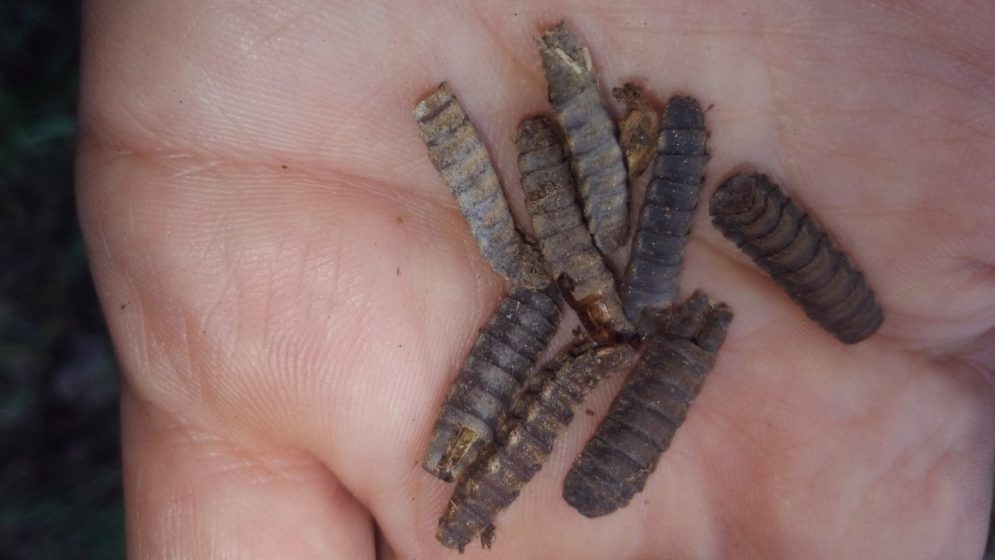
Relationships
Despite many years of trying, I have never been reliably successful in controlling the breeding and growth of the black soldier fly. My attempts at containing and intensively managing their life cycle have been hit or (mostly) miss, with successes often being accidental and short lived. A dense colony of BSF raised in confinement will frequently collapse for no apparent reason, some aspect of humidity, temperature, food, pathology, or other unknown variable causing them to tail-spin into a positive feedback loop of mass sudden die-off. This doesn’t mean I have not had robust BSF cultures on our land, they have just been in open-air compost piles under minimally-managed conditions, living, reproducing, and dying on their own terms. I provide them with food waste and in return they rapidly consume it, giving me finished compost as a by-product (along with the ability to occasionally harvest some of their larvae as animal feed). This resistance to total domestication and regulation is partly what makes BSF fascinating to me ― they thrive under open, chaotic, semi-wild, conditions, willing to engage in reciprocal ecological relationships, but with their own agency.
BSF’s resistance to being contained does not mean that it is impossible. On the contrary, there are industrial-scale BSF breeding facilities throughout the world that seek to reduce, mechanize, and standardize the fly’s life cycle so that it may carried out continuously while in confinement without regard for outside environmental conditions or seasonal fluctuations and producing neither odors nor offense ― an entirely regulated biological waste consumption machine fully compatible with the aesthetic demands of modernity. Environmental anthropologist Amy Zhang brilliantly explores this “circularity and enclosure” in an ethnography of a Chinese facility tasked with mending a city’s broken ecological waste metabolism with BSF while crafting an illusion of seamless techno-utopianism (Zhang, 2020).
Cultivation of BSF can happen on a micro-scale as well ― there are multiple online DIY designs for BSF composters that use little more than a five-gallon bucket and some tubing, as well as several pre-manufactured molded plastic BSF composters that are commercially available. They all feature a container where BSF larvae are kept and where food waste is deposited for them to eat. The designs take advantage of the “self-harvesting” behavior of BSF ― upon pupation, the larvae will climb up a ramp to a drier, higher spot where it is easier to fly away from after becoming a winged adult. The deceptive ramp terminates in a hole through which the BSF fall ― into a collection bucket where they are then gathered. Unlike house flies, BSF do not lay their eggs directly into food but instead in a nearby location. When the eggs hatch, the baby larvae will crawl to the food source. The designs also take advantage of this trait, allowing the adults to deposit their eggs on the outside of the container, but leaving small openings for the larvae to crawl through.
It may be possible to keep a colony alive through the winter in an enclosed BSF composter. Soldier fly larvae produce a great deal of heat through their own metabolic processes. Provided they are sufficiently fed, this heat can be enough to keep the larvae alive and active. Although they will not be hatching into adults until the warm weather returns, the larval colony can still be kept alive and continue to process putrescent wastes. Raising BSF in cold climates is an active field of research (Alvarez, 2012).
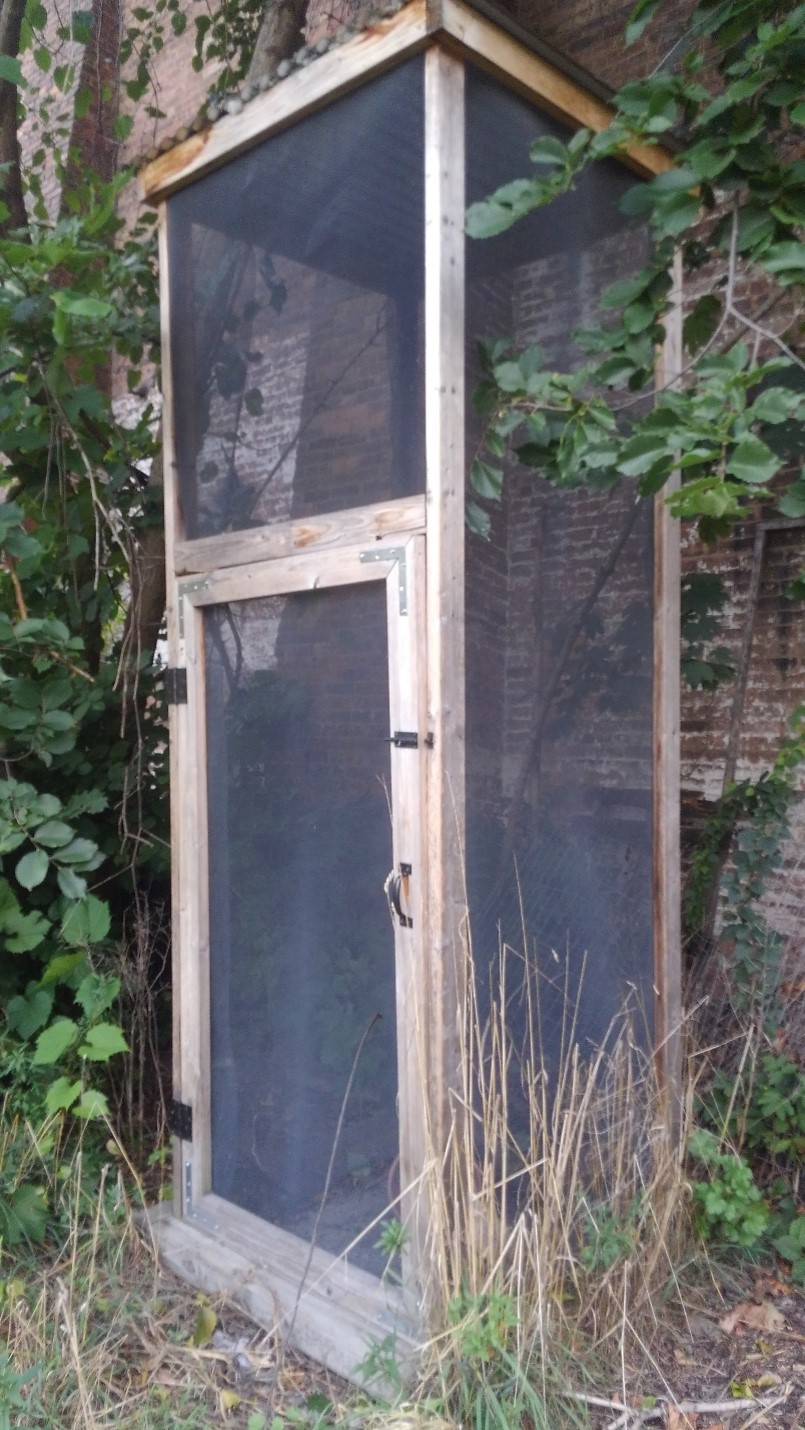
The alternative to raising BSF in a designated composter is to instead cultivate them in a semi-wild manner where they can effectively reduce wastes without continual maintenance on your behalf (it will also be less convenient to harvest the larvae). The first step in building a reciprocal relationship with BSF is to establish a healthy local population. Compost piles make ideal sites for BSF colonization, providing both food and warmth to the larvae and offering the possibility of overwintering a population. If BSF are already abundant in your area, they will likely arrive in a compost pile on their own. If they are not already common, or if you want to speed up the rate of colonization, another strategy is to “seed” a local population. This can be done by purchasing a container of black soldier flies, commonly sold as a reptile food under various trade names. While the greater the number of larvae you initially inoculate a compost pile with will determine the likelihood of success, between 250-500 larvae is a good start. Once a population is established, a colony can grow at a nearly exponential rate, as the female BSF (which are attracted to pheromones given off by the larvae) will lay upwards of 500 eggs each (Givens, 2013). While compost piles dominated by BSF can have putrescent foods put in them, be sure all the food waste is being eaten before adding more so as not to create odor problems. Larvae can be easily harvested from pile, as they typically congregate at its top. Pushing aside the top few inches of material will reveal them, after which they can be collected with a small shovel or a spoon. Provided the compost pile is large and fresh enough, it may continue to produce enough heat through the winter to keep the population of BSF alive. During the cold season, the larvae may migrate to the core of the pile where it is the warmest and may not be visible near its surface.
Educational Applications
It would be hard to describe black soldier fly larvae as being beautiful ― admittedly the first time I ever saw them, they filled me with feelings of disgust ― super-sized maggots crawling throughout food waste slime in a compost pile. For this reason, they will likely trigger “disgust sensitivity” (Jensen, 2019) within most people, particularly among those unfamiliar with the composting process.
Honeybees and Native Bees
Honeybees are a type of eusocial (Gowdy, 2013) insect that has been kept, tended, or cultivated by humans for their honey and other products for over seven thousand years (Oldroyd, 2012). While the western honeybee (Apis mellifera) is the species most raised today, there are traditions of harvesting honey from several bee species throughout the world (including Melipona beecheii, a stingless bee which was raised by the Maya in the Yucatan (Villanueva-G, 2005)). The western honeybee, originally native to Europe, Africa, and the Middle East (Han, 2012), has now been spread by humans throughout the globe with an estimated ninety million kept beehives worldwide.
Industrial monocultural agriculture is highly dependent on Apis mellifera, relying on them nearly exclusively to pollinate a great number of flowering staple food crops including almonds, apples, blueberries, melons, broccoli, and others. Insufficient insect pollination results in low or no fruit set, and cannot be substituted by technological means (despite dangerous technofix attempts such as robot bees (Potts, 2018)). Making a migratory loop throughout the country (a process that is highly stressful to bees (Simone-Finstrom, 2016)), commercial beekeepers transport hives via truck bed to different farms as their crops start to bloom and are an integral part of the world’s commercial food system. While much concern has been raised about Colony Collapse Disorder (CCD), a still-mysterious and multi-causal affliction that caused significant losses of beehives in the early 2000s (Andrews, 2019), CCD poses more of a threat towards industrialized food production than to insect pollinators populations in general (although many of CCD’s causes ― pesticides and habitat destruction ― are also contributing to the broader losses of “the insect apocalypse” (Goulson, 2019), and honeybees populations serve as a proxy for insect health at large).
Although modern day beekeeping is a highly managed practice that can involve genetic manipulation and the use of pharmaceuticals and pesticides, I still situate honeybees in a semi-wild, reciprocal zone category that is resistant to both domestication and domination. Even in the most chemically dependent and intensively monitored commercial beekeeping operations, there is a recognition of the bees’ own powerful agency in their relationships with humans along with a sense of collaboration vs. control that distinguishes bees from other livestock such as chickens or cows (Nimmo, 2015). For one, honeybees defy containment and property boundaries ― as honeybees have a typical foraging range of two to three miles (Beekman, 2000), no fence, netting, or structure can be built to confine them. Like the pigeons at Radix, bees are transgressive agents ― freely leaving the site and providing community pollinating services to neighborhood gardens abound. When a colony has grown too large or if conditions are less than ideal, the hive can abscond outright in full or in part by “swarming” – leaving their human manufactured boxes and taking up residence elsewhere in a tree, wall cavity, or other hollow structure. Visible as a dark and writhing mass of bees clinging to a tree branch, “wild swarms” originating from these feral colonies can with skill and luck in turn be “captured” and relocated to a bee box, providing a beekeeper with a free colony of local winter-hardy bees. In the springtime, when bees typically swarm, I often receive calls from panicked residents notifying me of a swarm in need of removal. Assuming they are dangerous, few realize that bees are exceptionally docile when swarming. Despite multiple attempts, I have yet still to be successful in collecting a wild swarm, a reminder to me of bees own wild agency and fiercely independent spirit.
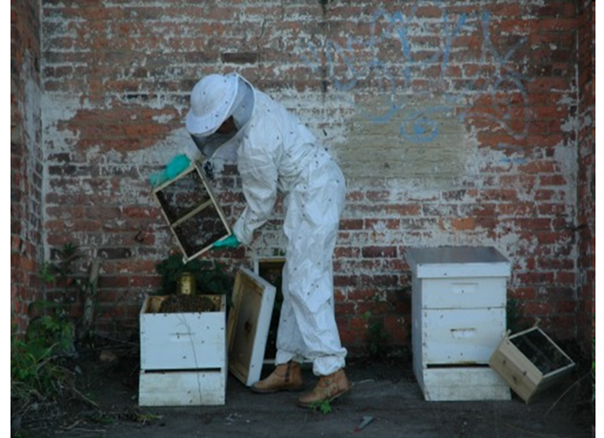
Raising honeybees in urban environments has become more popular in recent years (Moore, 2013), with beekeepers maintaining hives in underutilized spaces such as vacant parcels, parking lots, and rooftops. Honeybees are kept at Radix primarily for their service as pollinators (we allow them to keep the honey they produce to improve their chances of surviving the winter). With thousands of young to feed and a willingness to forage from a wide range of plants, honeybees are highly effective pollinators, greatly boosting the yields of fruit trees and vegetables alike. They also are fantastic for educational purposes ― it is great for children to taste raw honey straight from a comb or to handle a non-stinging drone (male) bee.
It is made clear to visitors, however, that honeybee pollination is a parallel strategy to supporting native pollinating bees. Recognizing the challenges of beekeeping (CCD, varroa mites, nosema disease) and that Apis Mellifera is not native to North America, we simultaneously create habitat and food for the hundreds of species pollinating bees, wasps, butterflies, and other insects native to New York (Cornell, 2020). While not honey producing, when present in sufficient numbers these native insects can provide pollination services that are equal to (Winfree, 2007) or potentially better than (MacInnis, 2019) honeybees. For certain pollinators, such as mason bees, we will construct housing and nesting tubes called “insect hotels” to enhance their productivity (Fortel, 2016). Our main strategy for supporting native insects, however, is to allow spontaneous vegetation to arise and go to flower in the marginal spaces alongside of gardens, creating un-mowed urban meadows (Norton, 2019). Pollinators drawn to the flowers of the wild plants will also be attracted to the blossoms of the nearby vegetables and fruit trees, therein creating food security and biodiversity enhancement simultaneously. In this way, it is possible to illustrate biocultural diversity, demonstrating to urban youth clear linkages of how the well-being of insects is interwoven with food production and in turn their personal, family, and community’s health.
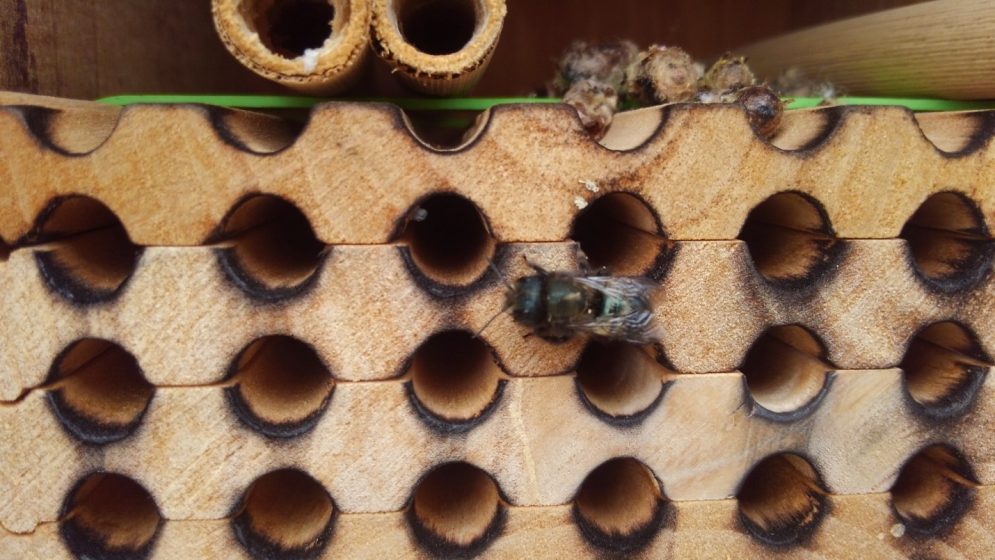
Wine Cap Stropharia
The last example of semi-wild relationships I wish to describe, if only briefly, is the cultivation of the wine cap stropharia (Stropharia rugosoannulata). Wine caps are a gourmet edible type of litter decomposing fungi that thrive in non-sterile environments, growing rapidly throughout substrates such as soil and wood chips. At the Radix Center, wine caps are grown in the chipped walkways between garden beds and the mulch donuts around the bases of fruit trees. When conditions are right (typically spring and fall following a rain) the mushrooms will fruit and grow to enormous sizes approaching ten inches in diameter (thus the reason for their moniker “garden giants”). The mycelial lenses, or clusters of woodchips tightly bound with fungal hyphae, can be transplanted into new areas to start new wine cap colonies. Provided they are “fed” new wood chips on an annual basis, stropharia patches will reliably produce each year. I include this fungal species within the zone of reciprocity on account of its predilection for non-sterile habitats. Many other edible fungi species demand highly specific growing substrates and conditions and must often be initially cultured in sterile laboratory conditions with technical expertise and significant capital costs. Furthermore, sterilizing or pasteurizing the grain or straw substrates needed by these fungal strains is time and energy intensive. The technical and financial requirements of these fungi limit the number of people on a global scale who may be able to cultivate them. The fact that wine caps may be grown in literally dirty conditions, and then may be propagated and shared through simple division, greatly increase the potential for them to be grown on a broad scale. While their fruiting times may be somewhat irregular and defy attempts at precise control, they nonetheless can provide a fairly reliable protein source to their human counterparts, placing them in the category of “semi-wild”.
Beyond being a food source, research has revealed the potential of using wine-caps for mycoremediation of a number of organic pollutants that contaminate urban soils (see the Urban Soil Justice chapter for more details) (Pozdnyakova, 2018) (Valentín, 2013) (Castellet-Rovira, 2018). Their ability to rapidly spread through the soils of polluted vacant parcels while oozing enzymes makes them a promising candidate for remediating toxins in the heterogynous, uncontrolled, wild and dirty environments that are urban brownfields.
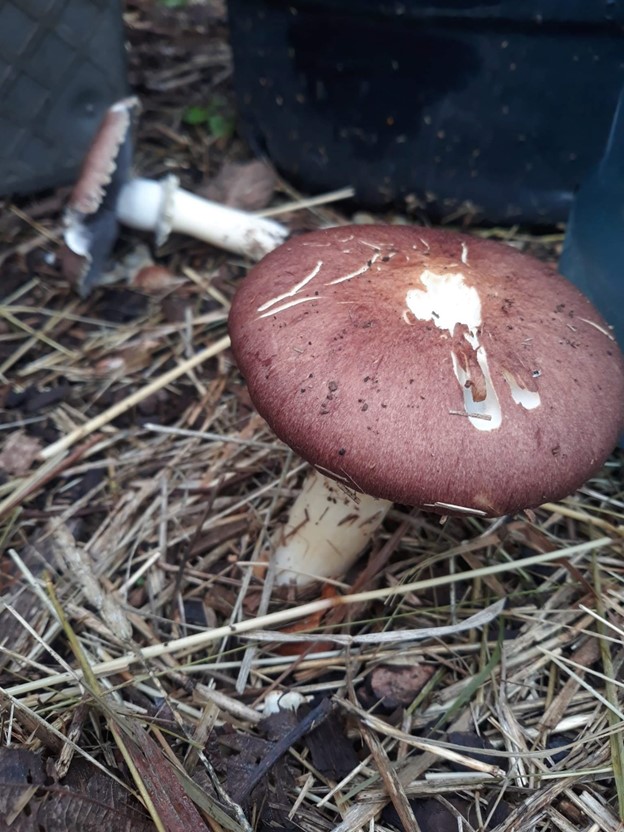
Conclusion – Zoonoses and the Limits of Nature-Society Reunification
This chapter has demonstrated relationships and pathways between humans and the semi-wild that attempt to bridge the duality of nature and society, a false dichotomy that I believe lies at the core of many of the attitudes and behaviors that drive ecological degradation and human exploitation. An emerging area of study (that is underexplored in this chapter) is around the idea of urban microbial rewilding, or designing urban spaces to maximize their microbial diversity for public health benefit (Flies, 2018) (Mills, 2017). This is a fascinating and important field of research as studies have suggested that many autoimmune disorders may be attributed in part to a lack of exposure to beneficial microorganisms in early childhood (Wasko, 2020) (Panelli, 2020). Are there, however, potential negative consequences that might result from the haphazard mixing of species and their associated microbiomes? Even before the creation of the nature-human dualism, were there still some codes of respect, distance, and balance that maintained the discordant harmony between human and non-human worlds that must now be remembered? Despite these codes, did unintentional crossovers still occur that created disruptions? Zoonoses, diseases with origins in non-human animals (chiefly viruses and bacteria), are a reminder and manifestation of what potentially can occur when species overlap and combine in novel configurations.
The Earth’s virosphere is vast, with estimates of potentially ten trillion species yet to be discovered (Zimmer, 2020). The vast majority of those viruses co-exist with humans non-threateningly, with viral endosymbiosis being a major driver of evolutionary transformation (Margulis, 2008). Occasionally, however, a virus will jump from one species to another and cause illness in its efforts to co-evolve (generally to a less virulent strain). The human consequences of these zoonotic illnesses can be devastating, with the histories of bubonic plague, smallpox, measles, certain influenzas, HIV, rabies, Lyme disease, and Ebola illustrating the potential effects. Many of these zoonoses are the result of agricultural intensification, animal domestication, and ecological disturbance (Jones, 2013) ― when species are driven out of their normal habitat or when they are newly hunted, opportunities are created for viral spillover (Quammen, 2012).
As I write this, we are in the midst of the coronavirus pandemic, another zoonotic virus originating in bats that has crossed over to humans, taking over a million human lives so far (Mega, 2020) and wreaking havoc upon the world. Coronavirus is very much a disease of the Anthropocene, with ecological disturbance, social inequality, hyper-connectivity, and political ineptitude compounding to amplify the suffering created by it (O’Callaghan-Gordo, 2020). In this way, COVID-19 has served as a grim reminder of our planetary inter-connectivity, exposing the myths of individual or national isolation and separation for the dangerous illusions that they are.
With so much effort now to control the spread of the disease through its focus on vaccines, contact tracing, masks, and so on, the public health discourse frames the coronavirus as a uniquely human challenge. While appreciating this urgency, and acknowledging that good work has been done in mapping the socio-economic and environmental inequities of the disease (Bowleg, 2020) (Lenzen, 2020), I would hope that a parallel discourse could be undertaken that frames covid-19 and zoonoses in general as a more-than-human phenomena, planning prevention of future pandemics with the most holistic strategies. Specifically, I am eager to avoid an overly technocratic response to future disease threats that creates greater ecological alienation, further separating nature from society and placing blame upon the world’s poorest. Such holistic frameworks are already being developed, with the platforms of one-health, eco-health, and planetary health providing global systems-level analyses of the interrelationship of human and ecological health (Lerner, 2017). Further philosophical work needs to be undertaken that frames pandemic response as a post-normal science embracing complexity, and that re-narrativizes the human-nonhuman relationship (Waltner-Toews, 2017). In this analyses, concerns about social justice, power, politics and global equity must also remain central, resisting the tendency of affluent researchers in the Global North to place the responsibility for causing and preventing disease upon subsistence farmers and hunters (Asayama, 2020) (Scoones, 2018).
I’m eager to avoid policies enacted to prevent future pandemics that favor practices of agricultural modernization that would further erode traditional lifeways. For instance, there has already been a push to confine chickens to darkened and cramped enclosures to prevent any possibility of them mixing with wild bird populations and being exposed to avian flu (Davis, 2006). Along with the forced preventative culling of backyard chicken flocks, such actions were taken in Cairo, Egypt in 2005 under the logic of “biosecurity” recommended by the United Nation’s Food and Agriculture Organization (Hinchliffe S. a., 2008). These measures unquestionably increase the profits of a handful of centralized industries and destroy a critical component of food security for the urban poor. While the threat of disease is serious, I believe it is important to implement more measured approaches that:
- Emphasize best practices of health and safety for small-scale poultry flocks (recognizing that birds that are well-fed, non-stressed, spaced apart, genetically diverse, and exposed to sunlight are less likely to get sick than their inbred counterparts in confined operations)
- Question the dynamics of power and access as they relate to who controls the food supply
- Recognize that cities are multi-species environments where inter-species entanglement is inherent (Nading, 2013).
Keeping these principles in mind, and in anticipation of the authoritarian technocratic policies potentially to be rushed in following the end of the coronavirus pandemic, I believe it is time to re-examine the “politics of conviviality” (Hinchliffe S. a., 2006) that describe the “recombinant ecologies” of cities and the multi-species co-evolutionary assemblages they are. Let us hope that biosecurity mindsets driven by fear and the impulse to control do not further modernize urban ecosystems by segregating and exterminating species, but rather foster relationships of reciprocity and respect that recognize the enormous fluidity and interchange that occurs between species and their exchanging virospheres. It is my hope that the relationships outlined in this chapter may provide a few examples of how just and reciprocal urban biocultural diversity may be cultivated.
Scott Kellogg
Albany
This essay is excerpted from the book “Urban Ecosystem Justice: Strategies for Equitable Sustainability and Ecological Literacy in the City” (Routledge, 2021) by Scott Kellogg.
Works Cited
Akkerman, S. F. (2011). Boundary crossing and boundary objects. Review of educational research, 81(2), 132-169.
Alberti, M. (2008). Advances in Urban Ecology Integrating Humans and Ecological Processes in Urban Ecosystems. New York: Springer Science+Business Media.
Alvarez, L. (2012). “The role of black soldier fly, Hermetia illucens (L.)(Diptera: Stratiomyidae) in sustainable waste management in Northern Climates.
Andrews, E. (2019). To save the bees or not to save the bees: honey bee health in the Anthropocene. Agriculture and Human Values, 36(4), 891-902.
Asayama, S. e. (2020). Are we ignoring a black elephant in the Anthropocene? Climate change and global pandemic as the crisis in health and equality. Sustainability Science, 1-7.
Barber, E. J. (1991). Prehistoric textiles: the development of cloth in the Neolithic and Bronze Ages with special reference to the Aegean. Princeton University Press.
Beatley, T. (2011). Biophilic cities: integrating nature into urban design and planning. Island Press.
Beekman, M. a. (2000). Long‐range foraging by the honey‐bee, Apis mellifera L. Functional Ecology, 14(4), 490-496.
Bennett, C. E. (2018). The broiler chicken as a signal of a human reconfigured biosphere . Royal Society open science, 5(12), 180325.
Berg, A. v. (2012). Defining modern, sustainable tapping guidelines. University of Vermont Proctor Maple Research Center.
Berger, J. (2013, April 3). Breeding Pigeons on Rooftops, and Crossing Racial Lines. The New York Times.
Bowleg, L. (2020, July). We’re not all in this together: on COVID-19, intersectionality, and structural inequality. American Journal of Public Health.
Bradshaw, C. J. (2016). Massive yet grossly underestimated global costs of invasive insects. Nature communications, 1-8.
Brown, J. E. (2013). Remaking maple: new method may revolutionize maple syrup industry. University Communications, University of Vermont. Retrieved from https://www.uvm.edu/uvmnews/news/remaking-maple
Buizer, M. B. (2016). Governing Cities Reflexively—The Biocultural Diversity Concept as an Alternative to Ecosystem Services. Environmental Science & Policy, 62, pp. 7-13.
Cai, F. a. (2016). Seasons and neighborhoods of high lead toxicity in New York City: the feral pigeon as a bioindicator. Chemosphere(161), 274-279.
Castellet-Rovira, F. e. (2018). Stropharia rugosoannulata and Gymnopilus luteofolius: Promising fungal species for pharmaceutical biodegradation in contaminated water. Journal of environmental management, 207, 396-404.
Chung, A. Y. (2010). Edible insects and entomophagy in Borneo. Forest insects as food: humans bite back.
Clark, C. (2019). The communitarian moment: The radical challenge of the Northampton Association . Cornell University Press.
Cooke, A. O. (1920). A Book of Dovecotes. TN Foulis.
Cornell, U. (2020). Bee Diversity in New York. Retrieved from Pollinator Network at Cornell: https://pollinator.cals.cornell.edu/wild-bees-new-york/bee-diversity-new-york/
Davis, M. (2006). The monster at our door: The global threat of avian flu. Macmillan.
Duchesne, L. e. (2005). Changes in structure and composition of maple–beech stands following sugar maple decline in Québec, Canada. Forest ecology and Management, 208(1-3), 223-236.
Elmqvist, T. e. (2013). Urbanization, biodiversity and ecosystem services: challenges and opportunities: a global assessment. Springer .
Farrell, M. (2013). The Sugarmaker’s Companion: An Integrated Approach to Producing Syrup from Maple, Birch, and Walnut Trees. . Chelsea Green Publishing.
Flies, E. J. (2018). Cities, biodiversity and health: we need healthy urban microbiome initiatives. Cities & Health, 2(2), 143-150.
Fortel, L. e. (2016). Use of human-made nesting structures by wild bees in an urban environment. Journal of Insect Conservation, 20(2), 239-253.
Frank, S. D. (2020). Can Cities Activate Sleeper Species and Predict Future Forest Pests? A Case Study of Scale Insects. insects, 11(3), 142.
Givens, M. e. (2013). The Black Soldier Fly How-to-Guide. University of North Carolina.
Gorelick, S. (2016). How Capitalism is Changing Vermont’s Maple Syrup Industry for the Worse. Shareable. Retrieved from https://www.shareable.net/mapjam-3-0-join-us-to-put-sharing-on-the-map/
Goulson, D. (2019). The insect apocalypse, and why it matters. Current Biology, 29(19), R967-R971.
Gowdy, J. a. (2013). The ultrasocial origin of the Anthropocene. Ecological Economics, 95, 137-147.
Green, A. (2008). Asian Beetle Spells Death for Maples So Dear. The New York Times.
Haag-Wackernagel, D. a. (2004). “Health hazards posed by feral pigeons.” . Journal of Infection , 307-313.
Han, F. A. (2012). From where did the W estern honeybee (A pis mellifera) originate? Ecology and evolution, 2(8), 1949-1957.
Haraway, D. (2018). Staying with the trouble for multispecies environmental justice. Dialogues in Human Geography, 8(1), 102-105.
Heise, U. K. (2016). Imagining Extinction: The Cultural Meanings of Endangered Species. Chicago: University of Chicago Press.
Hinchliffe, S. a. (2006). Living cities: towards a politics of conviviality. Science as culture, 15(2), 123-138.
Hinchliffe, S. a. (2008). People, animals and biosecurity in and through cities. In Networked Disease: Emerging Infections in the Global City (pp. 214-227).
Houston, D. e. (2018). Make kin, not cities! Multispecies entanglements and ‘becoming-world’in planning theory . Planning Theory, 17(2), 190-212.
Human Rights Watch, a. U. (2003). Small Change: Bonded Child Labor in India’s Silk Industry.
Jensen, N. H. (2019). We will eat disgusting foods together–Evidence of the normative basis of Western entomophagy-disgust from an insect tasting. Food Quality and Preference (72), 109-115.
Jerolmack, C. (2008). “How pigeons became rats: The cultural-spatial logic of problem animals.” . Social problems, 72-94.
Jones, B. A. (2013). Zoonosis emergence linked to agricultural intensification and environmental change. Proceedings of the National Academy of Sciences, 110.21, pp. 8399-8404.
Jonsell, M. (2017). Black soldier fly, Hermetia illucens, invasive food? Entomologisk Tidskrift, 138(3/4), 231-232.
Kimmerer, R. (2013). Braiding sweetgrass: Indigenous wisdom, scientific knowledge and the teachings of plants. Milkweed Editions.
Klein, J. (2007). A vending machine for crows. Diss. . New York University, Interactive Telecommunications Program .
Lee, H. L. (1995). A case of human enteric myiasis due to larvae of Hermetia illucens (Family: Stratiomyiadae): first report in Malaysia. The Malaysian journal of pathology, 17(2), 109-111.
Lenzen, M. e. (2020). Global socio-economic losses and environmental gains from the Coronavirus pandemic. PloS one, 15(7).
Leong, M. R. (2018). Biodiversity and socioeconomics in the city: a review of the luxury effect . Biology Letters , 14(5), na.
Lerner, H. a. (2017). A comparison of three holistic approaches to health: one health, EcoHealth, and planetary health. Frontiers in veterinary science, 163(4).
Li, Q. e. (2011). From organic waste to biodiesel: Black soldier fly, Hermetia illucens, makes it feasible. Fuel, 90(4), 1545-1548.
MacInnis, G. a. (2019). Pollination by wild bees yields larger strawberries than pollination by honey bees. Journal of Applied Ecology, 56(4), 824-832.
Margulis, L. (2008). Symbiotic planet: a new look at evolution.
McLain, R. J. (2014). Gathering “wild” food in the city: rethinking the role of foraging in urban ecosystem planning and management. Local environment, 19(2), 220-240.
Mega, E. R. (2020). COVID has killed more than one million people. How many more will die? Nature.
Mills, J. G. (2017). Urban habitat restoration provides a human health benefit through microbiome rewilding: the Microbiome Rewilding Hypothesis. Restoration ecology, 25(6), 866-872.
Mooallem, J. (2006, October 5). Pigeon Wars. New York Times Magazine.
Moore, L. J. (2013). Buzz: Urban beekeeping and the power of the bee. NYU Press.
Murphy, B. A. (2009). How do we come to know? Exploring maple syrup production and climate change in near north Ontario. Geography, 2.
Nading, A. M. (2013). Humans, animals, and health: From ecology to entanglement. Environment and Society, 4(1), 60-78.
Nana, P. e. (2018). Black soldier flies (Hermetia illucens Linnaeus) as recyclers of organic waste and possible livestock feed. International Journal of Biological and Chemical Sciences, 12(5), 2004-2015.
Nguyen, T. T. (2015). Ability of black soldier fly (Diptera: Stratiomyidae) larvae to recycle food waste. Environmental entomology, 44(2), 406-410.
Nigro, C. (2012, August 23). How Did the Pigeon Get to NYC? Retrieved from New York Public Library: https://www.nypl.org/blog/2012/08/23/how-did-pigeon-get-nyc
Nimmo, R. (2015). Apiculture in the anthropocene: Between posthumanism and critical animal studies. In Animals in the anthropocene: Critical perspectives on non-human futures (pp. 177-200).
Norton, B. A. (2019). Urban meadows as an alternative to short mown grassland: effects of composition and height on biodiversity. Ecological Applications, 29(6).
O’Callaghan-Gordo, C. a. (2020). COVID-19: The Disease of the Anthropocene. Environmental Research .
Oldroyd, B. P. (2012). Domestication of honey bees was associated with expansion of genetic diversity. Molecular ecology, 21(18), 4409-4411.
Osa, O. (2013). Pulke, Maple Syrup, and Palm Wine: International and Multicultural Literatures for Cross-Cultural Learning and Understanding. Humanities Education, 43.
Panelli, S. e. (2020). Inflammatory bowel diseases, the hygiene hypothesis and the other side of the microbiota: Parasites and fungi. Pharmacological Research.
Poe, M. R. (2013). Urban forest justice and the rights to wild foods, medicines, and materials in the city. Human Ecology, 41(3), 409-422.
Poe, M. R. (2014). Urban foraging and the relational ecologies of belonging. Social & Cultural Geography, 15(8), 901-919.
Potts, S. G. (2018). Robotic bees for crop pollination: Why drones cannot replace biodiversity. Science of the total environment, 642, 665-667.
Pozdnyakova, N. e. (2018). The degradative activity and adaptation potential of the litter-decomposing fungus Stropharia rugosoannulata. World Journal of Microbiology and Biotechnology, 34(9), 133.
Quammen, D. (2012). Spillover: animal infections and the next human pandemic. WW Norton & Company.
Ryznar, R. M. (2001). Using remotely sensed imagery to detect urban change: Viewing Detroit from space. Journal of the American Planning Association, 67(3), 327-336.
Sarpong, D. e. (2019). Biodegradation by composting of municipal organic solid waste into organic fertilizer using the black soldier fly (Hermetia illucens)(Diptera: Stratiomyidae) larvae. International Journal of Recycling of Organic Waste in Agriculture , 8(1), 45-54.
Scoones, I. e. (2018). Free-Book: Pathways To Health And Sustainability.
Shackleton, C. M. (2017). Urban foraging: A ubiquitous human practice overlooked by urban planners, policy, and research. Sustainability, 9(10), 1884.
Simone-Finstrom, M. e. (2016). Migratory management and environmental conditions affect lifespan and oxidative stress in honey bees. Scientific Reports, 6.
Spranghers, T. e. (2017). Cold hardiness of the black soldier fly (Diptera: Stratiomyidae). Journal of Economic Entomology, 110(4), 1501-1507.
Sturges, M. (2018). Bleed on, blest tree!”: Maple Sugar Georgics in the Early American Republic. Early American Studies: An Interdisciplinary Journal, 16(2), 353-380.
Swinscoe, I. e. (2019). Seaweed-fed black soldier fly (Hermetia illucens) larvae as feed for salmon aquaculture: assessing the risks of pathogen transfer. Journal of Insects as Food and Feed, 5(1), 15-27.
Tomberlin, J. K. (2020). Black soldier fly from pest to ‘crown jewel’of the insects as feed industry: an historical perspective. Journal of Insects as Food and Feed , 6(1), 1-4.
Valentín, L. e. (2013). Mycoremediation of wood and soil from an old sawmill area contaminated for decades. Journal of hazardous materials, 260, 668-675.
Villanueva-G, R. D.-U. (2005). Extinction of Melipona beecheii and traditional beekeeping in the Yucatán peninsula. Bee World, 86(2), 35-41.
Villazana, J. a. (2019). Tolerance of immature black soldier flies (Diptera: Stratiomyidae) to cold temperatures above and below freezing point. Journal of Economic Entomology , 112(6), 2632-2637.
Waltner-Toews, D. (2017). Zoonoses, One Health and complexity: wicked problems and constructive conflict. Philosophical Transactions of the Royal Society B: Biological Sciences, 372.
Wang, Y.-S. a. (2017). Review of black soldier fly (Hermetia illucens) as animal feed and human food. Foods, 6(10), 91.
Wasko, N. J. (2020). Multiple sclerosis, the microbiome, TLR2, and the hygiene hypothesis. Autoimmunity reviews, 19(1).
Winfree, R. e. (2007). Native bees provide insurance against ongoing honey bee losses. Ecology letters, 10(11), 1105-1113.
Zhang, A. (2020). CIRCULARITY AND ENCLOSURES: Metabolizing Waste with the Black Soldier Fly. Cultural Anthropology, 35(1), 74-103.
Zimmer, C. (2020, 4 24). Welcome to the Virosphere. The New York Times.
[i] See concepts like “biophilic cities” (Beatley, 2011)
[ii] The exact causes of the luxury effect are debated – it may result from wealthier resident’s preferences for more biodiverse areas, or be a consequence of the large “cultured diversity” of cultivated ornamental plants found in wealthier neighborhoods. In my own experience and that of others (Ryznar, 2001), I have noticed multiple exceptions to the luxury effect where low-income neighborhoods seem to have higher rates of biodiversity on account of the preponderance of un-maintained and forested lots/parks/cemeteries that unintentionally function as biodiversity refuges.
[iii] I will emphasize by restating that this is indeed a continuum – in no way intend to reify the false dualism between the domestic in the wild. Rather, I see “domestic” and “wild” as vague poll points of reference along a spectrum of possible relationships. Many times, species will easily move from one poll towards another. “Feral” animals are a good example of this – once domesticated species or their descendants becoming less co-dependent on humans. Similarly, formerly wild species can become synanthropic – tolerant of humans and successful at co-habitation with them.
[iv] Later in history, pigeon manure was used for both tanning leathers and for manufacturing saltpeter, an additive in gun powder. Additionally there are stories of British and French armies fueling their war machines with the huge guano piles commandeered from the pigeon coops of wealthy landowners.
[v] It should be mentioned, though, that pigeons are definitely at risk from aerial predators, such as falcons and hawks. Many birds of prey, in fact, choose to nest in skyscrapers, attracted to cities by the abundant pigeon food supply. There’s not much that can be done to protect free range pigeons from raptors. You just have to hope that, considering how many pigeons live in cities, statistically your birds are less likely to be hunted).
[vi] While Bombyx mori is the most commonly raised species of silkworm, there are other domestic and semi-wild species of silkworm that eat other species of plants besides mulberries.
[vii] It should be noted that the global silk industry has often relied upon bonded child labor (especially in India) in order to produce its products – essentially a form of slavery with terrible working conditions for children (Human Rights Watch, 2003).
[viii] Florence, Massachusetts is one example. The 19th century utopian community “Northampton Association of Education and Industry” (of which Sojourner Truth was a member) once ran a cooperative silk industry there (Clark, 2019).
[ix] Before the project began, we were concerned about the potential for lead or other contaminants to be soluble in the liquid sap and to concentrate in the finished syrup. After being unsuccessful in finding any published studies regarding the safety of urban syrups, we partnered with researchers at Siena College to run an analysis of the finished product. Their testing with an X-ray fluorescence machine revealed concentrations of metals in the Albany syrup that were comparable to those found in a control sample taken from a rural location.
[x] The internet is full of time lapse videos displaying soldier fly’s ability to reduce various animal carcasses to bones in matters of hours.
[xi] Care should be always be taken to be certain that BSF are dead before being consumed as they are capable of otherwise surviving in the human digestive track, resulting in the horrific condition of myiasis (Lee, 1995).
[xii] The potential impact of black soldier flies on ecosystems to which they are not native is understudied, however at least one study has rung the alarm bell following their apparent escape from a breeding facility (Jonsell, 2017)
[xiii] Inaturalist data shows BSF ranging into the northeastern US and parts of northern Europe (Villazana, 2019)

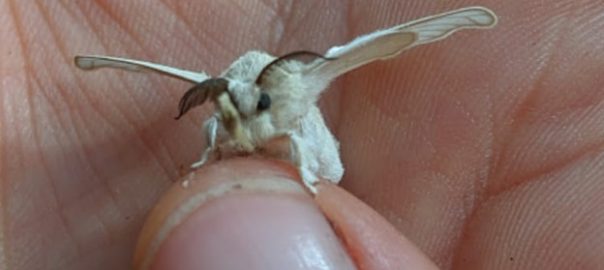






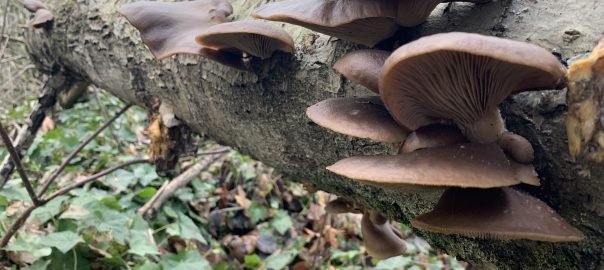
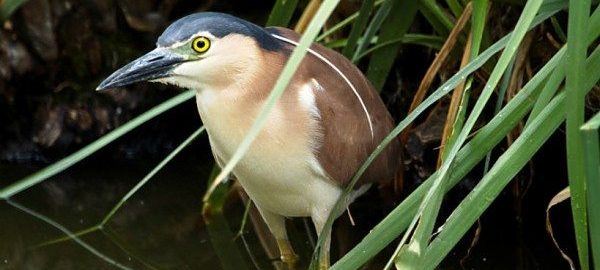
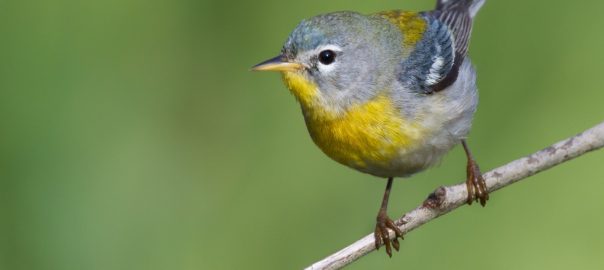
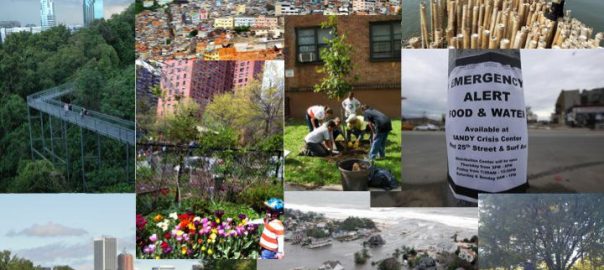
Add a Comment
Join our conversation